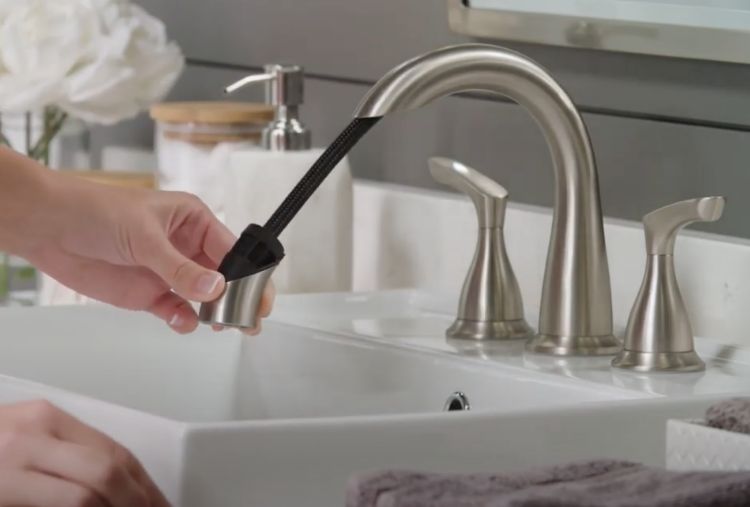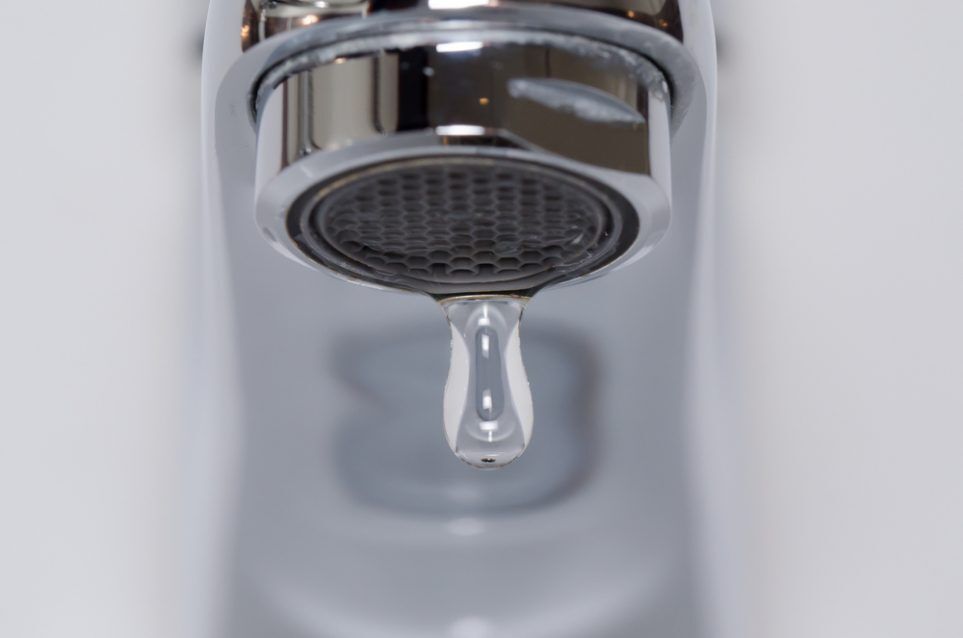Almost everyone has his or her own conception about Should I Repair or Replace a Leaky Faucet?.

Dripping faucets may look like a minor hassle, however their influence surpasses simply the annoyance of the sound. From wasting water to sustaining unneeded economic prices and wellness threats, neglecting a leaking faucet can bring about numerous repercussions. In this post, we'll explore why it's important to address this common house concern without delay and successfully.
Waste of Water
Environmental Influence
Leaking faucets add substantially to water waste. According to the Environmental Protection Agency (EPA), a solitary faucet trickling at one drip per second can waste greater than 3,000 gallons of water per year. This not just pressures water resources however also impacts communities and wild animals dependent on them.
Step-by-Step Overview to Fixing a Dripping Faucet
Tools Called for
Before attempting to repair a leaking tap, gather the required devices, consisting of an adjustable wrench, screwdrivers, replacement components (such as washing machines or cartridges), and plumber's tape.
Common Faucet Issues and Their Solutions
Determine the kind of tap and the details concern causing the drip. Common problems include worn-out washers, corroded valve seats, or faulty O-rings. Refer to producer instructions or online tutorials for step-by-step guidance on repairs.
Financial Costs
Increased Water Expenses
Beyond the environmental influence, trickling taps can pump up water bills considerably. The built up waste over time converts right into higher energy costs, which could have been stayed clear of with timely fixings.
Prospective Home Damages
Additionally, prolonged trickling can result in harm to fixtures and surface areas surrounding the tap. Water accumulation can trigger discoloration, rust, and also structural concerns if left ignored, causing added repair work prices.
Health Worries
Mold And Mildew and Mildew Growth
The continuous visibility of moisture from a dripping faucet develops an ideal atmosphere for mold and mildew and mold development. These fungi not only compromise indoor air high quality however also pose wellness risks, especially for people with respiratory system problems or allergic reactions.
Waterborne Illness
Stagnant water in leaking faucets can come to be a breeding ground for microorganisms and other virus, increasing the threat of waterborne conditions. Pollutants such as Legionella germs flourish in stationary water, possibly causing severe diseases when consumed or inhaled.
Do it yourself vs. Expert Repair work
Pros and Cons of Do It Yourself Repair Service
While some may try to fix a trickling faucet themselves, do it yourself repair work feature their own collection of difficulties. Without correct understanding and devices, DIY efforts can aggravate the problem or bring about incomplete repair services, lengthening the problem.
Benefits of Working With a Professional Plumber
Hiring an expert plumber makes certain that the underlying cause of the leaking faucet is attended to properly. Plumbings possess the know-how and tools to detect and fix tap issues successfully, conserving time and decreasing the threat of further damages.
Ecological Duty
Specific Payment to Preservation
Taking obligation for repairing dripping faucets straightens with more comprehensive initiatives toward water conservation and ecological sustainability. Every person's activities collectively make a significant influence on maintaining precious sources.
Lasting Living Practices
By prioritizing punctual repair services and embracing water-saving habits, people contribute to lasting living methods that profit both present and future generations.
Safety nets
Routine Upkeep Tips
To avoid trickling faucets, perform routine maintenance such as cleansing aerators, examining for leaks, and changing damaged parts without delay. Additionally, think about mounting water-saving devices or upgrading to a lot more reliable fixtures.
Value of Prompt Services
Dealing with leaking taps as quickly as they're discovered prevents more water wastage and possible damages, inevitably conserving both water and cash in the future.
Influence On Residential Or Commercial Property Value
Perception of Well-Maintained Residential Or Commercial Property
Maintaining a residential or commercial property in good condition, including addressing upkeep concerns like trickling faucets, enhances its perceived worth and charm among possible purchasers or renters.
Influence on Resale Worth
Qualities with well-kept plumbing fixtures, consisting of taps, command higher resale worths in the real estate market. Resolving leaking faucets can add to a positive impact during property assessments and negotiations.
Final thought
Addressing a leaking tap exceeds simple ease; it's a necessary action towards conserving water, decreasing economic prices, and safeguarding health and wellness and building. Whether through DIY repair work or expert help, doing something about it to deal with trickling taps is a tiny yet impactful means to advertise accountable stewardship of sources and add to a much healthier, extra lasting future.
How to Fix a Dripping or Leaky Faucet
A leaking faucet is one of the most common problems that homeowners encounter, but it being commonplace doesn’t make it any less annoying. The constant drip drip drip of a leaking bathtub faucet, showerhead, or sink tap can disturb your home’s serenity. Left neglected, a dripping faucet can also result in higher water bills and discoloration or mold growth in your sink or plumbing fixtures.
Fortunately, you don’t have to be a trained plumber to know how to stop a dripping faucet. With some basic tools, replacement parts, and a little patience, leaky faucet repair is a breeze. In this article, we’ll explain what causes dripping faucets and how you can fix them.
What Causes a Leaking Faucet?
Kitchen and bathroom faucets come in all manner of designs, but most involve some combination of valves, O-rings, seals, and washers. The O-ring is usually the weakest link, but any one of these pieces can wear down over time. Heat, moisture, temperature fluctuations, minerals, mold, and movement can contribute to warping and corrosion, breaking the watertight seal. This just comes with the territory of being a homeowner. Everything is always subject to wear and tear, and some component parts of your appliances and fixtures need to be replaced on occasion. At least replacement O-rings are cheap!
More rarely, dripping faucets can be a symptom of excessively high water pressure. Were this the case in your home, you would probably notice that the leak is not isolated to one faucet. Water pressure issues are harder to resolve on your own. We recommend contacting a professional plumber if you suspect your water pressure is too high.
How to Fix a Dripping Faucet
- Pipe wrench or monkey wrench
- Allen wrench set
- Screwdrivers
- Old towel or rag
Shut off the water.
Before you do anything, you need to turn off the water to keep from drenching your kitchen or bathroom. You should find a valve under the sink and against the wall. Once you’ve turned this valve, try turning the faucet on to confirm that the water source has been cut off.
If you can’t locate your local valve for the faucet you’re working on, you can always shut off the water to the house at the main valve. Of course, this will prohibit anyone from using the sinks, showers, or toilets while you’re working on the faucet that’s giving you trouble.
Plug or block the drain.
You’ll be disassembling the faucet and removing some small bits of hardware. Plug the drain with a stopper or rag to avoid the possibility of a small screw falling into your P-trap.
Take apart the faucet assembly.
There are several varieties of kitchen and bathroom faucets, each with its own manner of assembly. For detailed instructions on how to disassemble your faucet, you can refer to the fixture’s manual or contact the manufacturer. If you know whether you have a ball, disc, cartridge, or compression faucet, you can find detailed schematics online.
In general, you need to begin by removing the faucet handles. You might notice a small screw that you’ll need to remove with a screwdriver or Allen wrench. If you don’t see any visible securing hardware, it’s likely hidden under a decorative cap that can be unscrewed or popped off with flathead screwdriver.
Remove each piece methodically, consulting a schematic when necessary. Take notes or arrange the pieces in such a way to make it easier to correctly reassemble the faucet later.
Remove the cartridge.
Once you’ve removed the handles and securing hardware, you should be able to remove the valve cartridge or stem. Some cartridges will slide right out. Other faucet models will require you to loosen a nut with a pipe wrench before you can remove the valve stem.
Examine the exposed hardware.
With the cartridge or stem removed, inspect the component parts. Check the rubber O-rings for wear and tear. Also examine the seat washer for corrosion or other damage. These pieces are usually the responsible parties for a dripping faucet, but it’s worth inspecting the other component parts while you have the faucet disassembled.
Find replacement parts.
Once you’ve identified which faucet component has failed, find an identical replacement. Your local hardware store should have O-rings, seat washers, and other standard components in stock. If you have a luxury or uncommon faucet, you may have to contact the manufacturer for a replacement part.
It’s a good idea to take your old parts with you to the hardware store so you can compare them with the store’s inventory and be sure you’re purchasing the correct replacement.
Reassemble the faucet.
With your new parts in hand, reconstruct the faucet and handles. Don’t be tempted to overtighten screws or nuts. You might think this could create a better seal, but it can instead damage or bend a delicate part of the assembly and create a new problem for you.
Turn on the water and test the faucet.
The only thing left to do is test your work. Unplug the sink, turn the water back on, and try the faucet. Congratulate yourself on a job well done!
https://www.libertyhomeguard.com/how-to-fix-a-dripping-or-leaky-faucet/

We are very interested by Why It's Important to Fix Leaky Faucets and I'm hoping you appreciated our blog post. Make sure you take a moment to promote this write-up if you enjoyed reading it. Thanks a bunch for your time. Please pay a visit to our blog back soon.
Comments on “What It's Critical to Fix a Malfunctioning Faucet”